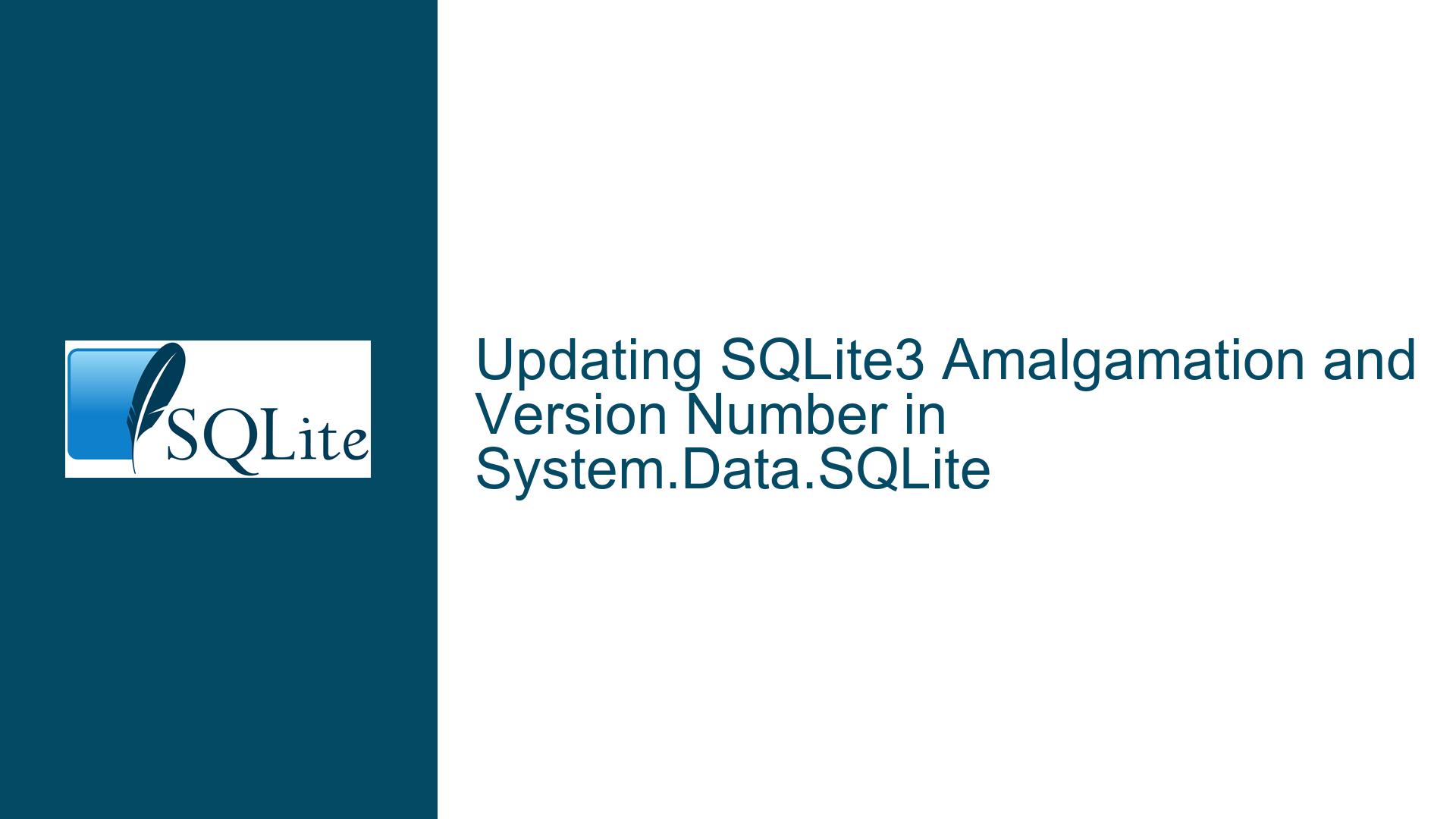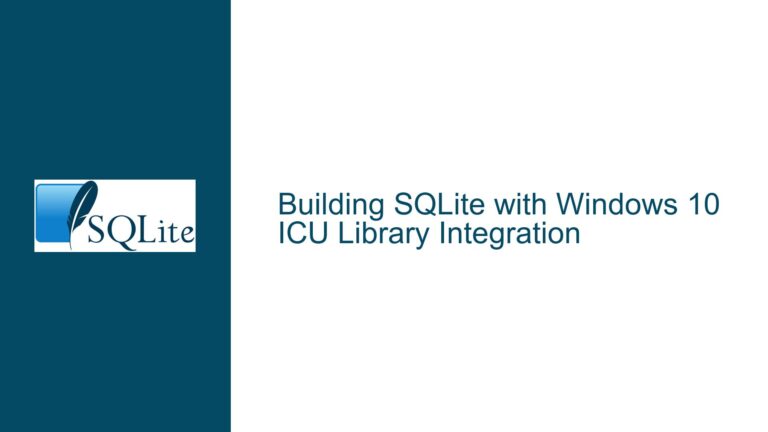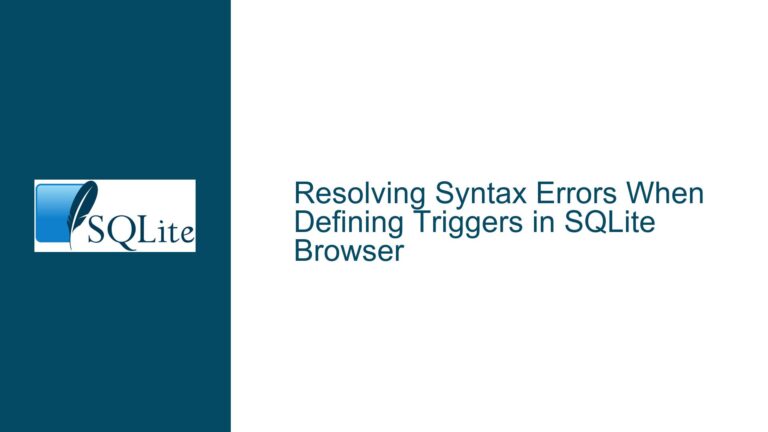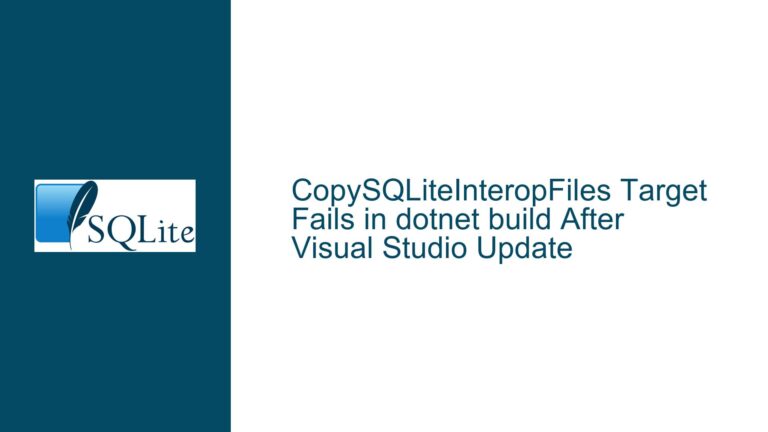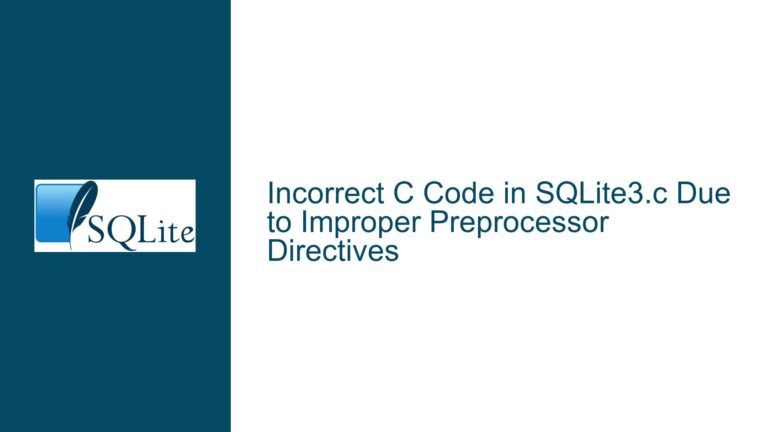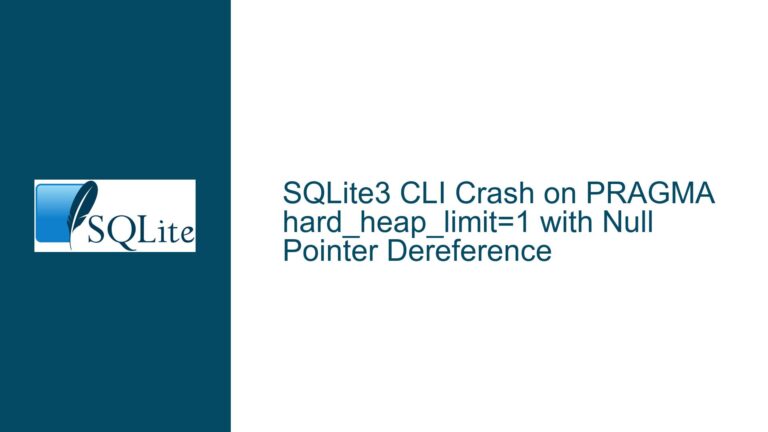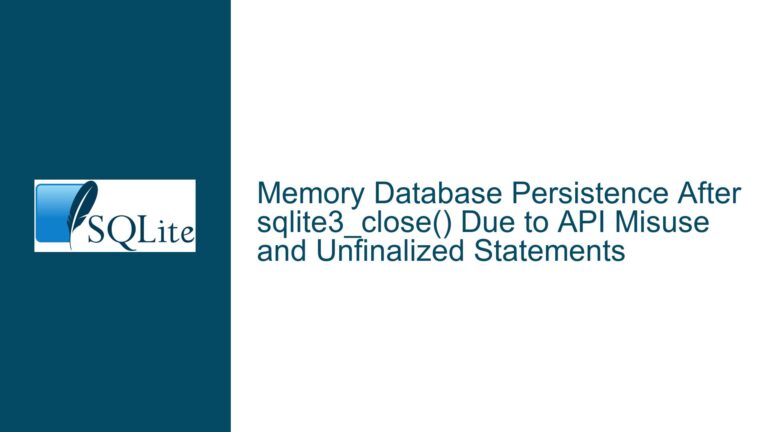Updating SQLite3 Amalgamation and Version Number in System.Data.SQLite
Replacing SQLite3 Amalgamation Files in System.Data.SQLite
The process of replacing SQLite3 amalgamation files in System.Data.SQLite to incorporate the latest version of SQLite3 involves several technical considerations. The amalgamation files, located in the ..\SQLite.Interop\src\core directory, are crucial as they contain the core SQLite3 library. Replacing these files allows developers to leverage the latest features, bug fixes, and performance improvements provided by newer versions of SQLite3. However, this process is not without its challenges, particularly when it comes to ensuring compatibility and maintaining version consistency across the application.
When replacing the amalgamation files, it is essential to ensure that the new files are compatible with the existing System.Data.SQLite codebase. This involves compiling the updated source code and verifying that the application can successfully link against the new SQLite3 library. In the case described, the compilation process was successful, and the application was able to pick up the later version of the SQLite library. This indicates that the replacement process, at least in this instance, did not introduce any immediate compatibility issues.
However, the successful compilation and linkage of the new SQLite3 library do not guarantee that the application will function correctly in all scenarios. It is crucial to perform thorough testing to ensure that the updated library does not introduce any regressions or unexpected behavior. This includes testing all database operations, such as queries, inserts, updates, and deletes, as well as any custom extensions or functions that rely on the SQLite3 library.
Challenges in Updating the Version Number in System.Data.SQLite
One of the more nuanced challenges in this process is updating the version number of System.Data.SQLite to reflect the new SQLite3 library version. The version number is a critical piece of metadata that helps developers and users identify the specific build of the library they are working with. In the case of System.Data.SQLite, the version number appears in multiple places within the source code, making it difficult to ensure consistency across the entire codebase.
The initial attempt to update the version number by modifying the ..\tools\install\Properties\AssemblyInfo.cs file did not yield the expected results. Specifically, the updated version number did not reflect in the DLL’s properties when examined with File Explorer, nor was it visible when querying the ProviderVersion property of the SQLiteConnection object. This discrepancy suggests that the version number is either being overridden elsewhere in the codebase or that the AssemblyInfo.cs file is not the sole source of this information.
To address this issue, it is necessary to identify all locations within the System.Data.SQLite source code where the version number is defined or referenced. This may involve searching through the entire codebase for instances of the version number and ensuring that all references are updated consistently. Additionally, it may be necessary to investigate the build process to determine if the version number is being set or modified during compilation.
Ensuring Version Consistency Across the Application
Ensuring version consistency across the application is a critical aspect of maintaining a stable and reliable codebase. In the context of System.Data.SQLite, this involves not only updating the version number in the source code but also ensuring that the version number is correctly propagated to all relevant components, including the compiled DLL and any associated metadata.
One potential approach to achieving version consistency is to centralize the version number definition in a single location within the source code. This could involve creating a dedicated file or configuration setting that stores the version number and is referenced by all other components that require this information. By centralizing the version number definition, developers can ensure that any updates to the version number are automatically propagated throughout the codebase, reducing the risk of inconsistencies.
Another consideration is the use of automated tools or scripts to manage version number updates. For example, a build script could be created to automatically update the version number in all relevant files during the compilation process. This approach can help streamline the version update process and reduce the likelihood of human error.
Troubleshooting Version Number Propagation Issues
When troubleshooting version number propagation issues, it is important to adopt a systematic approach that involves identifying the root cause of the problem and implementing a solution that addresses the underlying issue. In the case described, the version number update did not propagate to the DLL’s properties or the ProviderVersion property of the SQLiteConnection object, indicating a potential issue with how the version number is being set or accessed.
One possible cause of this issue is that the version number is being overridden or modified during the build process. To investigate this possibility, it is necessary to examine the build configuration and any associated scripts or tools that may be affecting the version number. This may involve reviewing the build logs or using debugging tools to trace the version number as it is processed during compilation.
Another potential cause is that the version number is being accessed from a different location than expected. For example, the ProviderVersion property of the SQLiteConnection object may be retrieving the version number from a different source, such as a configuration file or a separate assembly. In this case, it may be necessary to update the version number in the relevant source or ensure that the correct version number is being referenced.
Best Practices for Managing Version Numbers in System.Data.SQLite
To avoid issues with version number propagation in System.Data.SQLite, it is important to follow best practices for managing version numbers in a complex codebase. These best practices include:
Centralize Version Number Definition: Define the version number in a single location within the source code and reference this definition from all other components that require the version number. This approach ensures that any updates to the version number are automatically propagated throughout the codebase.
Automate Version Number Updates: Use automated tools or scripts to manage version number updates during the build process. This can help streamline the version update process and reduce the likelihood of human error.
Verify Version Number Propagation: After updating the version number, verify that the updated version number is correctly propagated to all relevant components, including the compiled DLL and any associated metadata. This may involve using tools such as File Explorer or querying the
ProviderVersionproperty of theSQLiteConnectionobject.Document Version Number Management: Document the process for managing version numbers in the System.Data.SQLite codebase, including the location of the version number definition, the steps for updating the version number, and the tools or scripts used to automate the process. This documentation can help ensure that all developers are aware of the version number management process and can follow it consistently.
Conclusion
Updating the SQLite3 amalgamation files and version number in System.Data.SQLite is a complex process that requires careful attention to detail and a thorough understanding of the codebase. By following best practices for managing version numbers and adopting a systematic approach to troubleshooting, developers can ensure that the updated SQLite3 library is correctly integrated into the application and that the version number is consistently propagated throughout the codebase. This, in turn, helps maintain a stable and reliable application that leverages the latest features and improvements provided by SQLite3.
